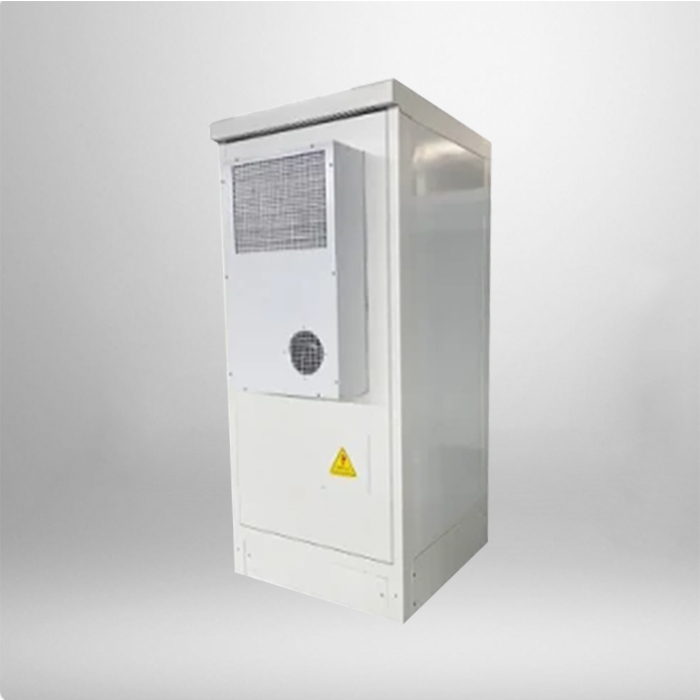
The Parts of an Outdoor Telecom Cabinet
Outdoor telecom cabinets are critical infrastructure components in modern telecommunications networks, housing equipment that enables wireless and wired connectivity in public spaces, remote areas, and urban environments. Unlike indoor server cabinets, outdoor telecom cabinets must withstand harsh environmental conditions—including extreme temperatures, moisture, dust, and physical impacts—while ensuring reliable operation of communication systems. This paper explores the essential parts of an outdoor telecom cabinet, focusing on their design, functionality, and integration to meet the demands of outdoor deployment.
1. Introduction
An outdoor telecom cabinet serves as a protective enclosure for network equipment, providing secure housing for devices such as routers, switches, fiber optic terminals, power supplies, and cooling systems. These cabinets are strategically placed in locations like street corners, utility poles, and rural areas to extend network coverage. Their components are engineered to balance durability, accessibility, and energy efficiency. Below is a detailed breakdown of their key parts.
2. Core Components of an Outdoor Telecom Cabinet
2.1 Enclosure Structure
Material: Typically constructed from corrosion-resistant materials like stainless steel, aluminum, or fiberglass-reinforced plastic (FRP) to withstand weathering.
IP Rating: Must meet high ingress protection standards (e.g., IP55 or IP66) to prevent water and dust intrusion.
Design: Features a hinged door with gasket seals, reinforced corners, and anti-vandal locks for security.
2.2 Mounting and Interior Framework
Rack Rails: Standardized 19-inch mounting rails for equipment such as servers and switches.
Adjustable Shelves: Modular shelves to accommodate devices of varying sizes (e.g., power supplies, batteries).
Cable Management: Channels and clips to organize fiber optic, copper cables, and power cords.
2.3 Communication Equipment
Optical Line Terminals (OLT): Centralize fiber optic connections in passive optical networks (PON).
Optical Network Units (ONU): Provide fiber-to-the-home (FTTH) or fiber-to-the-building (FTTB) connectivity.
Radio Units (RU): Transmit and receive wireless signals for 4G/5G networks.
Switches and Routers: Manage data traffic within the cabinet and across the network.
2.4 Power Systems
Primary Power: Connected to the grid via circuit breakers and surge protectors.
Backup Power:
Battery Systems: Lead-acid or lithium-ion batteries for short-term outages.
Solar Panels: Renewable energy sources for off-grid locations.
Power Distribution Units (PDUs): Distribute power to devices with overload protection.
2.5 Cooling and Environmental Control
Thermal Management:
Fans and Blowers: Regulate airflow to prevent overheating.
Thermoelectric Coolers: Use Peltier effect for precise temperature control.
Ventilation Grilles: Allow passive cooling in low-heat environments.
Humidity Control: Desiccant bags or automatic dehumidifiers to prevent condensation.
2.6 Protection and Security Features
Lightning Arrestors: Safeguard equipment from electrical surges.
Surge Protectors: Mitigate voltage spikes.
Tamper Detection: Alarms or sensors triggered by unauthorized access.
Anti-Corrosion Coatings: Protect against salt, chemicals, and UV radiation.
2.7 Monitoring and Management Systems
Environmental Sensors: Monitor temperature, humidity, and battery levels.
Remote Management:
IP Cameras: Provide real-time video surveillance.
IoT Gateways: Enable remote diagnostics and firmware updates.
LED Indicators: Display operational status (e.g., power on, fault alerts).
2.8 Ancillary Components
Earthing System: Ensures proper grounding to prevent electrical hazards.
Cable Seals: Waterproof glands for cable entry points.
Accessories: Ladder racks, cable organizers, and signage for identification.
3. Layout and Design Considerations
3.1 Space Optimization
Vertical vs. Horizontal Layout:
Vertical racks are common for high-density equipment (e.g., 1U/2U devices).
Horizontal shelves accommodate bulkier items like batteries and power supplies.
Front-to-Back Access: Allows technicians to service equipment without disturbing internal cabling.
3.2 Thermal Zoning
Hot and Cold Aisles: Separate heat-generating devices (e.g., ONUs, switches) from cool zones to improve cooling efficiency.
Heat Sources: Place high-power devices at the bottom for natural convection cooling.
3.3 Cable Management
Dual Entry Points: Separate cable entry for power and data to avoid interference.
Labeling Systems: Track cable routes for easy maintenance.
4. Case Studies
4.1 Rural Fiber Optic Cabinet
Components: OLT, ONU, battery backup, solar panel, surge protector.
Design: Weatherproof FRP enclosure with passive cooling vents.
Function: Provides FTTH connectivity to remote villages with unreliable grid power.
4.2 Urban 5G Radio Cabinet
Components: 5G RU, switch, PDU, thermoelectric cooler, IP camera.
Design: Stainless steel enclosure with forced-air cooling and anti-vandal locks.
Function: Supports high-speed wireless coverage in dense city areas.
4.3 Hybrid Power Cabinet
Components: Grid-connected PDU, lithium-ion batteries, solar charge controller.
Design: Aluminum enclosure with integrated solar panels on the roof.
Function: Combines grid and solar power for cost-effective, sustainable operations.
5. Standards and Compliance
5.1 Environmental Standards
IP Ratings: IEC 60529 specifies IP55/IP66 for outdoor use.
Temperature Range: Compliant with IEC 60068-2-1/-2 for extreme temperatures (-40°C to +70°C).
5.2 Telecom Industry Standards
ETSI EN 301 489: EMC (electromagnetic compatibility) requirements for telecom equipment.
ITU-T G.984: Standards for PON systems in outdoor cabinets.
5.3 Safety Regulations
NFPA 70 (NEC): Electrical safety codes for power installations.
OSHA: Guidelines for ergonomic access and maintenance.
6. Future Trends
Edge Computing: Integration of servers in outdoor cabinets to reduce latency for IoT and 5G applications.
Green Energy: Increased use of solar panels and energy-efficient cooling systems.
AI-Driven Monitoring: Predictive analytics for proactive maintenance.
7. Conclusion
An outdoor telecom cabinet is a sophisticated system designed to house, protect, and manage critical communication infrastructure in challenging environments. Its components—from the rugged enclosure to advanced monitoring tools—must collaborative work to ensure reliability, security, and energy efficiency. As telecommunications evolve toward 5G, IoT, and smarter cities, outdoor cabinets will continue to adapt, incorporating cutting-edge technologies to meet the demands of a connected world. Proper design, compliance with standards, and strategic component selection are key to maximizing performance and longevity in these vital installations.


